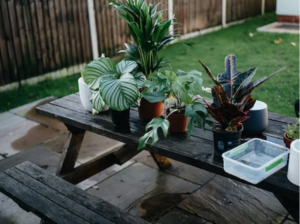If you have outdoor plants, you know that caring for them can be a real challenge. From the heat of summer to the cold of winter, your plants need special attention and care if they are to thrive. With a few simple tips, however, you can make sure that your outdoor plants stay healthy and beautiful all year round. Read on to learn how to take better care of your outdoor plants!
1. Using metal tree tags
Metal tree tags are a great way to keep track of your outdoor plants. These metal tags are durable and can be used to identify the species, variety, and location of each plant in your garden. They also help you remember when you planted a particular plant and make it easier to identify problems or pests that may arise. When attaching these tags, make sure that they’re securely fastened so as not to damage the stems of the plants. You can click here and find out more about metal tree tags and why you should have them. It can be easier to take advice from professionals.
2. Watering regularly
Water is essential for all plants, but especially those outdoors that are exposed to weather changes throughout the year. To ensure your outdoor plants stay healthy, give them at least an inch (2-3 cm) of water every week during spring, summer, and autumn. During the winter months, you may need to water less often since your plants will be dormant. Depending on the weather and your soil conditions, however, you may need to water more frequently during this time.
3. Pruning
Pruning is a great way to maintain the health of your outdoor plants by removing dead or diseased branches and promoting new growth. It’s best to prune early in the spring before active growth begins so that your plant has enough energy for fresh growth later in the season. Make sure that all cuts are clean and sharp to avoid damaging other parts of the plant while also avoiding leaving any jagged edges which could invite pests or diseases into the garden.
4. Mulching
Mulching is a great way to protect the roots of your outdoor plants from extreme temperatures and help keep moisture in the soil. It also helps prevent weeds from growing, thus reducing the amount of weeding you’ll have to do. When mulching, make sure that you spread it evenly around the base of your plant and leave a few inches (7–10cm) between the mulch and stem for good air circulation.
5. Fertilizing
Fertilization helps ensure your outdoor plants get all their essential nutrients to stay healthy and strong. The type and amounts of fertilizer will differ depending on the species of plant in question so be sure to read up on which kind is best for each one of your plants. It’s best to fertilize your outdoor plants in the early spring so that they have enough time to absorb all the nutrients for the growing season.
6. Watching for pests
Outdoor plants can become infested with a variety of pests, from insects to rodents. To keep these pests away, make sure you inspect your plants regularly and remove any damaged leaves or twigs. Additionally, avoid using chemical pesticides unless necessary as they can damage the environment and cause health problems in pets and humans. If you do need to use chemical pest control, be sure to read the label carefully and follow all safety precautions.
What are some popular outdoor plants?
Outdoor plants come in a wide variety of shapes and sizes, from annuals to perennials. Some of the most popular outdoor plants include:
- Roses – The classic rose is one of the most beloved garden plants in many countries around the world. They’re relatively easy to care for and can offer up beautiful blooms during the summer months. A key part of caring for roses is pruning back dead and diseased stems regularly as well as fertilizing them twice a year.
- Lavender – This fragrant herb is known for its calming effects and its bright purple or blue blossoms which are great for attracting pollinators like bees and butterflies into your garden. Be sure to water lavender regularly and prune it back in the spring to encourage new growth. You may also want to apply an organic fertilizer every few months as well.
- Hydrangeas – These large shrubs come in many colors, from pink and blue to white and purple. They’re known for their big flower clusters which appear during the summer months, so be sure to keep them watered whenever there’s a lack of rain. If you’re looking to add some striking color to your garden, hydrangeas are a great choice!
Taking care of your outdoor plants doesn’t have to be a chore! By following these tips, you can make sure that your garden stays healthy and vibrant throughout the year. With just a little bit of time and effort, you can create an oasis of green beauty in your backyard! Happy gardening!


